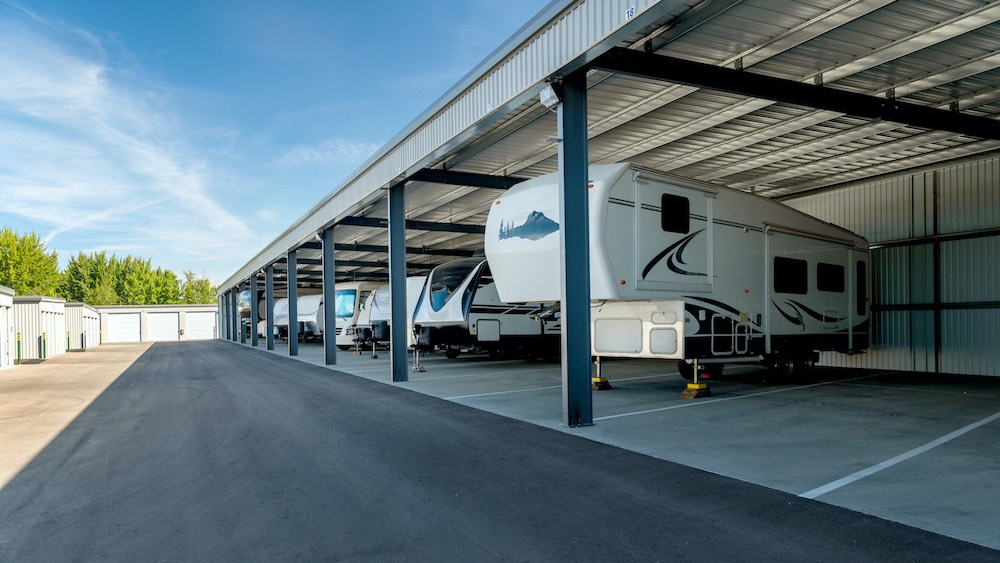RV & Camper Storage in Canada: Protect Your Home on Wheels
Canada’s vast landscapes and breathtaking scenery make it an RV and camper paradise. Whether you’re exploring the Rocky Mountains, the Maritimes, or the Prairies, your RV is your gateway to adventure. When it’s time to park your rig for the off-season or between trips, finding a secure storage facility is essential. Here’s everything you need to know about RV and camper storage in Canada, including top destinations, storage options, and preparation tips.
Amazing RV & Camping Destinations in Canada
Canada is home to some of the world’s most incredible camping sites, perfect for RV and camper enthusiasts:
- Banff & Jasper National Parks (Alberta) – Towering mountains, crystal-clear lakes, and world-class camping.
-
Pacific Rim National Park (British Columbia) – Experience the wild beauty of the Pacific coast, near Tofino.
-
Gros Morne National Park (Newfoundland & Labrador) – Stunning fjords, rugged cliffs, and remote beauty.
-
Fundy National Park (New Brunswick) – Home to the highest tides in the world and beautiful forested campgrounds.
-
Algonquin Provincial Park (Ontario) – A classic Canadian camping experience with vast lakes and forests.
-
Prince Edward Island National Park (PEI) – Red cliffs, sandy beaches, and peaceful coastal camping.
-
The Cabot Trail (Nova Scotia) – A breathtaking road trip with plenty of scenic campgrounds.
After your adventures, secure storage options in cities like Toronto, Vancouver, Calgary, Edmonton, Montreal, and Halifax ensure your RV stays safe until your next journey.
What Are the Options for Storing an RV or Camper?
-
Outdoor Storage: The most affordable option, outdoor storage means parking your RV in a secure facility. While it protects against theft and vandalism, it leaves your vehicle exposed to Canada’s harsh winters and summer sun.
- Outdoor Covered Storage: This option provides an added layer of protection against the elements. A covered structure helps shield your RV from rain, snow, and UV rays while still offering the benefits of outdoor storage.
-
Indoor Storage: The best choice for long-term protection, indoor storage keeps your RV completely enclosed. This is ideal for Canadian winters, preventing snow buildup, freezing damage, and UV exposure.
Why Use RV Storage in Canada?
-
Space Saving: Free up room in your driveway or yard.
-
Security: Protect your RV from theft, vandalism, and damage.
-
Weather Protection: Reduce exposure to Canada’s extreme weather conditions, from heavy snowfall to intense summer sun.
- Convenience: Many storage facilities offer security monitoring, maintenance, and easy access.
What Types of RVs & Campers Can Be Stored?
-
Motorhomes (Class A, B, and C RVs)
-
Travel Trailers
-
Fifth-Wheel Campers
-
Pop-Up Campers
-
Truck Campers
-
Toy Haulers
Storage Space & Features
Storage spaces range from 15 to 50 feet in length, with extra-large options available for oversized RVs. Features to look for include:
-
24/7 Access (some facilities have restricted hours)
-
Gated Entry & Security Cameras
-
Electricity Hookups & Water Access
-
Dumping Stations & Wash Bays
How Much Does RV Storage Cost in Canada?
Storage prices vary depending on location, facility type, and amenities. Here’s a general guide:
-
Outdoor Storage: $50 - $150 per month
-
Outdoor Covered Storage: $100 - $250 per month
-
Indoor Storage: $200 - $500+ per month
Prices tend to be higher in major cities like Toronto, Vancouver, and Montreal, while smaller towns and rural areas may offer more budget-friendly options.
How to Prepare Your RV or Camper for Storage
Step 1: Gather Supplies
-
Cleaning supplies for interior & exterior
-
WD-40 for hinges & locks
-
Garbage bags & storage boxes
-
Non-toxic RV antifreeze (for winterizing in cold regions)
-
Water heater bypass kit (if needed)
-
Mothballs & insect deterrents
Step 2: Clean & Protect the Interior
-
Remove all food and clean out the fridge & freezer, leaving doors open
Strip beds, wash linens, and store in sealed bags
Place moisture absorbers inside to prevent mould
Set insect traps and mothballs in key areas
Open cupboard doors for ventilation
Store kitchenware in airtight containers
Step 3: Electronics & Appliances
-
Remove or disconnect batteries from electronics
-
Follow manufacturer instructions for winterizing appliances
-
Unplug and clean the microwave, TV, and other devices
Step 4: Winterizing & Water System Maintenance
-
Drain fresh, grey, and black water tanks
-
Lubricate valves with WD-40
-
Drain the water heater (after cooling)
-
Open all faucets, toilet, and external shower to release pressure
-
Add non-toxic antifreeze to prevent freezing damage
Step 5: Electrical System & Battery Care
-
Disconnect the battery and store in a cool, dry place
- Turn off the battery disconnect switch
- Remove dry-cell batteries from smoke detectors, clocks, etc.
Step 6: Exterior Protection
-
Wash and wax the RV to protect against dirt & UV rays
-
Close all blinds and use sunshades to prevent fading
-
Clean and dry the awning before rolling it in
-
Lubricate door hinges and locks
-
Ensure all windows and doors are closed and locked
By following these steps, you’ll ensure your RV or camper remains in excellent condition while in storage. Whether you’re storing for the winter or just between trips, choosing the right facility and preparing your vehicle properly will save you time, money, and maintenance in the long run.
